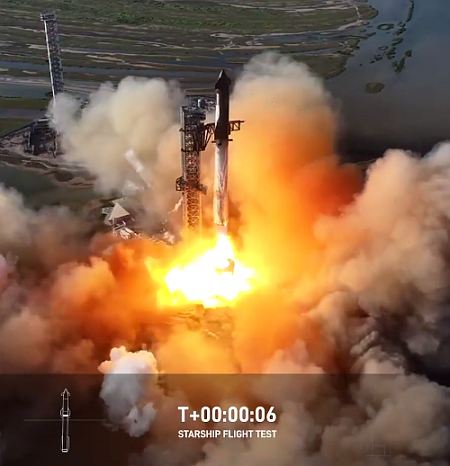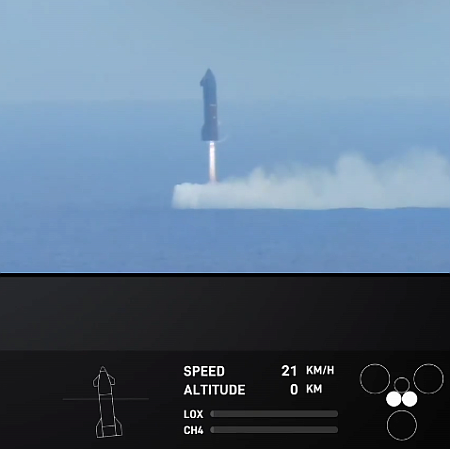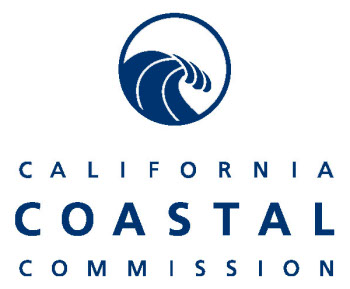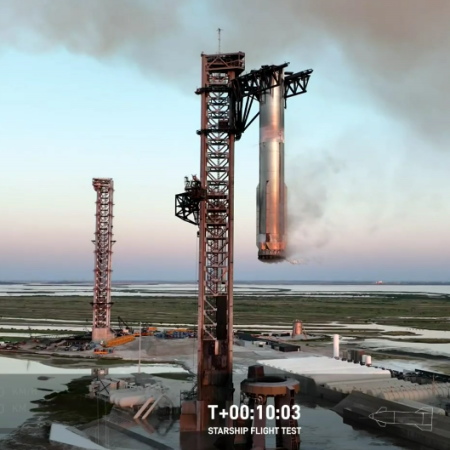
SpaceX today successfully completed the sixth orbital test flight of its Starship/Superheavy heavy lift rocket, only forty days after its previous test flight, the shortest turn-around so far, mainly because the FAA imposed no red tape to hold SpaceX back.
Before describing details of the flight, it is essential to note that this giant rocket, bigger than the Saturn-5 that sent Apollo astronauts to the Moon and intended to be completely reusable and being designed to be able to relaunch in mere hours, has been conceived, designed, built, and tested entirely by a private company and free American citizens, funded almost entirely by private investment capital hoping to make a profit from the rocket. The government and NASA has played almost no part, except possibly using its regulatory power improperly to slow development down by a year or two.
Even more important its development has cost a tiny amount compared to similar government programs, and has been accomplished in less than a third of the time.
Thus this rocket is a perfect example of freedom in action. Get the government out of the way and allow humans the freedom to follow their dreams, and they will do astonishing things.
As for the flight, Superheavy worked perfectly in getting Starship off the launchpad and on its way into orbit. However, engineers canceled a second tower catch attempt and instead diverted Superheavy to complete a soft splashdown just off the coast in the Gulf of Mexico. The booster touched down on the water quite softly, and then fell over into the water. Expect SpaceX to quickly do salvage operations to recover it.
Starship reached its orbit as planned, carrying for the first time a payload, a single plastic banana suspended by cords in the center of the Pez deployment payload bay where SpaceX hopes to soon begin deploying Starlink satellites. Though somewhat silly, the banana is being used by SpaceX and the FAA to certify future payload operations.
About 38 minutes into the flight engineers did the first re-light of one Raptor-2 engine while in orbit, the burn lasting about three-four seconds. This burn demonstrated that Starship is capable of doing a de-orbit burn so that in a future flight it can be launched into a full orbit and use the engines to bring it back to a precise location on Earth, including possibly a return to the launch tower for its own chopstick catch.

Starship splashing down vertically
During re-entry the flight plan called for pushing Starship beyond its technical margins in order to learn exactly what those limits were. Even so, it appeared that — unlike the previous flights — there was very little evidence of damage to the flaps from the heat of re-entry. One flap appeared to have damage at one pointed end, and even that burn-through appeared far less than the previous flights.
During final descent and moving slower than the speed of sound they pointed the ship nose down in order to stress the flaps the most. Even so, the ship performed as planned, and splashed down softly and vertically in the Indian Ocean.
Though the flight plan for this Starship flight as well as the previous flights was purposely designed to bring it back to Earth before it completes an orbit, this was still essentially a successful orbital launch, and thus I am including it in my launch totals. The leaders in the 2024 launch race:
118 SpaceX
53 China
13 Russia
12 Rocket Lab
American private enterprise now leads the rest of the world combined in successful launches 136 to 79, while SpaceX by itself leads the entire world, including American companies, 118 to 97.




